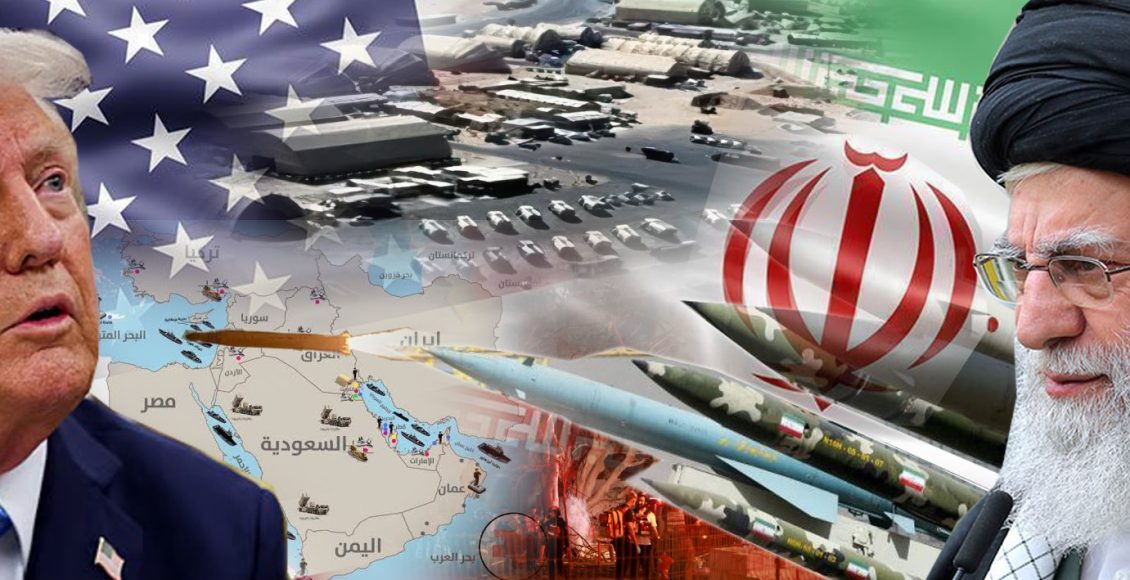SANAA, June 18 (YPA) – The confrontation between the Israeli occupation and the Islamic Republic of Iran has been escalating since the Islamic Revolution, recently culminating in Israeli airstrikes targeting nuclear facilities and prominent leaders in Tehran.
Despite Israeli occupation entity’s efforts to cripple the Revolutionary Guard Corps’ capabilities as part of its shock strategy, Iran has demonstrated rapid adaptation through new appointments to restore balance.
Iran realizes that “Israel” is not acting alone, and that war also reflects American desires after the failure of negotiations. Washington gave Tehran a 60-day deadline to halt uranium enrichment, but Iran rejected the blackmail, asserting its right to develop its peaceful nuclear program.
As negotiations were approaching a new round, Israeli strikes changed the equation and disrupted the chances of reaching an agreement.
The battle is escalating daily, with US intelligence and logistical support for Israeli entity, while Iran prepares to respond forcefully. The most important question remains: Why is Iran waiting for the American shot, and why doesn’t it launch a preemptive strike against Washington’s bases in the region?
American war strategy
The indications are clear to Iran and observers of the region that direct US intervention in the war is only a matter of time, as Washington implements its usual strategy: allies pave the way, and Washington reaps the benefits.
According to American and Hebrew media, the Pentagon is strengthening its military presence in the Middle East. The Aviationist website reported that squadrons of F-22 Raptor and F-35 Lightning II fighter jets are heading to the region, coinciding with statements by the US Secretary of Defense about strengthening the defense posture there.
At Diego Garcia Air Base in the Indian Ocean, near Iran, B-52 bombers are stationed, while US President Donald Trump escalated the situation by threatening to assassinate Ayatollah Ali Khamenei in a post on “Truth Social,” which would be considered a declaration of war.
Regardless of Trump’s credibility, known for his use of psychological warfare, his statements reflect clear US intentions for escalation. The question now is: How will Iran respond?
Iranian pressure card
Amid regional tensions, Iran’s threat to target US bases constitutes a strategic leverage, especially in the event of Washington’s direct intervention in the war or launching attacks against it.
Although the United States is the primary supporter of the Israeli occupation in the current confrontation, and there are clear indications of US military intervention, Tehran maintains the language of threats as a means of maneuvering and confusing its opponents. It also seeks to confirm the Revolutionary Guard’s readiness to inflict damage on US bases, citing the 2020 Iranian missile attack on Ain al-Asad base following the assassination of Quds Force commander Qassem Soleimani.
In this context, the US “New York Times” newspaper reported that Iran has prepared missiles and other military equipment for potential strikes on US bases in the Middle East, should Washington join Israel in its war against Iran.
The newspaper based its report on statements by US officials who had reviewed intelligence reports indicating that any US attack would lead to Iranian responses, including planting mines in the Strait of Hormuz and targeting US bases.
This argument was reinforced by an Iranian report clarifying the validity of these intentions.
In contrast, two Iranian officials confirmed that Tehran would begin targeting US bases in the Middle East, particularly in Iraq, if the United States intervened in the war.
Ridiculous threat
What prevents Tehran from launching a preemptive strike against US bases, given that US intervention is contingent upon a White House decision, which will only be delayed if Iran accepts US conditions—conditions that Khamenei has rejected, describing Trump’s threats as absurd?
Iran possesses an advanced arsenal that includes ballistic missiles, cruise missiles, and drones, including newer, more accurate, and lighter missiles with multiple warheads. Some of these missiles are solid-fueled, improving propulsion and reducing launch preparation time.
US bases in the Gulf states, such as Bahrain, Qatar, and the UAE, are within the Iranian targeting range.
US bases in the region
US forces are deployed in more than 19 locations in the Middle East, including eight permanent bases. The ones closest to Iranian missiles include Al Udeid Air Base in Qatar, Al Dhafra in the UAE, naval bases in Bahrain, such as the headquarters of the Fifth Fleet, Ain al-Assad in Iraq, Camp Arifjan in Kuwait, Muwaffaq Salti in Jordan, and bases in Syria, such as al-Tanf and Ain Issa.
If Iran does not target these bases with preemptive strikes, it could face the risk of military attrition and the depletion of its missile capabilities, which could lead to concessions that could lead to internal political changes and regional repercussions.
Launching a preemptive strike could create a balance of deterrence and an opportunity to negotiate from a position of strength, provided a decisive decision is made without hesitation, especially given the leverage behind the scenes.
Sanaa’s confrontation with Washington
Iran can draw lessons from the outcome of the confrontation between Sanaa and Washington, whether in the Red Sea or by targeting Sanaa and areas under the Supreme Political Council’s control in support of the goals of the Israeli occupation.
Yemeni audacity has significantly affected American prestige, especially with regard to the aircraft carriers that have been deployed in the Red and Arabian Seas. This situation led to a clear setback for the US Navy, leading to the withdrawal of the aircraft carrier Truman to its bases within the United States.
Had the Yemeni stance not been characterized by such dedication, courage, and patience, and the continued targeting of US naval vessels in conjunction with the bombing of Tel Aviv, the Israeli occupation would have achieved its goals set out through Washington.
Sanaa’s strategy in confronting the US-Israeli alliance has proven successful in minimizing its influence, which has confused the US administration. This confirms that confronting the United States begins by undermining its image and exposing its failure to the world.
YPA


